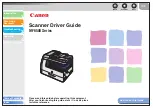
Table 1.5—Fluid Property and Energy Flow Calculations
Standard
Description
N
at
ur
al
G
as
H
yd
roc
ar
bo
n
Li
qui
d
St
eam
AGA 5 (2009)
AGA 5 provides the methods for computing the mass, molar, and volumetric heating
values of natural gas at reference temperature. AGA 5 is also used in calculating re-
lated properties, including Wobbe index, motor octane number, and net (inferior) vol-
ume heating value.
AGA 5 supports an intermediate calculation and therefore is not a
standard fluid property selection in the Scanner 3300 Web Interface.
♦
♦
AGA 8, Part 1,
Detailed (2017)
The worldwide standard for calculating the physical properties of natural gas and
similar gases is the AGA 8 92DC equation originally described in AGA Report No. 8
(1992). The 2017 edition, Part 1, uses the same DETAIL equations of state as in the
1994 edition of AGA 8. However, the temperature, pressure, and gas composition
limits have been modified in this edition.
Use of this calculation requires a gas analysis, i.e. knowledge of the mole fractions of
21 gas components: the alkanes methane through decane, common diluents includ-
ing nitrogen, carbon dioxide, hydrogen sulfide, and assorted trace components. In
ISO 12213-2 (1997), the AGA 8 92DC equation was adopted without modification.
The AGA 8 92DC equation is most accurate between temperatures of 17 °F and 143
°F (–8 °C to 62 °C) and at pressures up to 1,750 psia (12 MPa). If lesser accuracy is
acceptable, the range can be extended from –200 °F to 400 °F (–130 °C to 200 °C)
and pressures up to 20,000 psi (140 MPa). This fluid calculation will provide the com
-
puted value for Speed of Sound.
♦
AGA 8, Part 1,
Gross (2017);
SGerg-88
(1988)
When the detailed composition of the gas is unknown, an alternative method of charac-
terizing the gas is available. It is based on the gross properties: real gas relative density
(gas gravity), and content of carbon dioxide and nitrogen. This method detailed in AGA
8 and ISO 12213-3 is based on the SGerg-88 equation. The Gross Characterization
method should only be used at temperatures between 17 °F and 143 °F (–8 °C to 62
°C) and at pressures below 1,750 psia (12 MPa). Gravity range is from 0.554 to 0.87;
up to 28.94% carbon dioxide, and up to 53.6% nitrogen. This method should not be
used outside of these limits.
♦
AGA 8, Part 2
(2017); Gerg-
2012
AGA 8, Part II uses temperature, pressure, and gas molar composition to compute
fluid density at base and flowing conditions. AGA 8, Part II is used with a flow calcula
-
tion to determine fluid flow rate.
♦
API MPMS
Chapter 11.1
(2004)
The temperature and pressure correction factors for hydrocarbon liquids including
crude oil, refined products (gasoline, jet fuel, fuel oils), lubricating oils, and special
products are calculated according to API MPMS Chapter 11.1 (2004). For crude oils,
the density range is 610.6 to 1,163.5 kg/m3, temperature range is from –58 °F to 302
°F (–50 °C to 150 °C), and pressure range is from 0 to 1,500 psig (0 to 10,340 kPa).
For differential pressure meters, the viscosity at operating temperature is a required
input to the flow computer, and it must be determined as accurately as possible.
♦
API MPMS
Chapter 20.1
(2011)
API MPMS Chapter 20.1, Section 1.9.5.4, provides procedure for computing net oil
volume in an oil/water mixture when watercut is higher than normal and a dynamic
sampling method, such as an online watercut analyzer, is used to measure watercut,
incorporating a shrinkage factor where applicable.
♦
GPA 2145
(2008)
GPA 2145 is a compilation of numerical values for the paraffin hydrocarbons and
other compounds occurring in natural gas and natural gas liquids as well as for a few
other compounds of interest to the industry.
GPA 2145 supports an intermediate cal-
culation and therefore is not a standard fluid property selection in the Scanner 3300
Web Interface.
♦
16
Section 1
Scanner 3300 EFM
Summary of Contents for 3300 EFM
Page 6: ...This page intentionally left blank v Scanner 3300 EFM Table of Contents...
Page 25: ...This page intentionally left blank 19 Scanner 3300 EFM Section 1...
Page 55: ...This page intentionally left blank 49 Scanner 3300 EFM Section 2...
Page 68: ...This page intentionally left blank 62 Section 3 Scanner 3300 EFM...
Page 76: ...This page intentionally left blank 70 Section 4 Scanner 3300 EFM...
Page 80: ...This page intentionally left blank 74 Section 5 Scanner 3300 EFM...
Page 84: ...This page intentionally left blank 78 Section 6 Scanner 3300 EFM...
Page 87: ...This page intentionally left blank A 3 Scanner 3300 EFM Appendix A...
Page 91: ...This page intentionally left blank B 4 Appendix B Scanner 3300 EFM...
Page 93: ...This page intentionally left blank C 2 Appendix C Scanner 3300 EFM...
Page 95: ...This page intentionally left blank C 4 Appendix C Scanner 3300 EFM...
Page 97: ......
Page 98: ......
Page 99: ......
Page 100: ......
















































